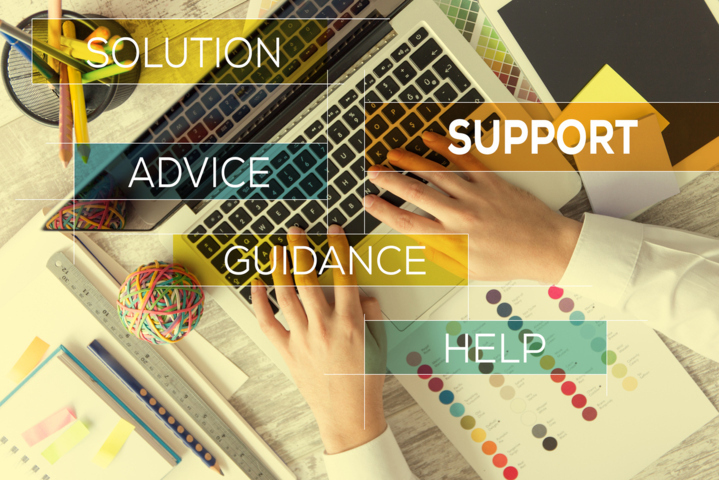Discover the secrets of effective Gap Selling with our comprehensive guide. Learn how to identify, address, and bridge the gaps in your sales process to drive success.
As a sales professional, do you ever wonder what pushes a buyer to finally say yes to purchasing your product or availing your service? While this could differ from one buyer to another, a useful sales strategy many sales professionals use is identifying the gap between what their prospect is currently struggling with and how to solve this problem once and for all, moving them into this ideal future state where all the pain points, challenges, and struggles have been dealt with.
This particular sales technique is called gap selling, and it is what we will be discussing in this article. Whether you are just starting your sales career and want to improve your skills or you are a seasoned sales professional looking to explore more opportunities, this comprehensive guide to gap selling will help you discover how to convert leads and prospects to sure buyers and repeat customers, driving you to succeed in your sales career.
What is Gap Selling?
Gap selling is a sales methodology and approach that focuses on identifying and addressing the “gap” or disconnect between a prospect’s current state (their challenges, pain points, and needs) and their desired state (their goals, aspirations, and outcomes). The idea behind this sales approach is to highlight the difference between where the prospect is currently and where they want to be, emphasizing the value and benefits of the product or solution being offered to bridge that sales gap.
Popularized by A. E. “Keenan” Cazan, a sales expert and author, the gap selling methodology is based on his book “Gap Selling: Getting the Customer to Yes.” According to Keenan, traditional sales methods often focus too much on features, benefits, and product specifications, while neglecting to deeply understand the prospect’s unique situation and the problems they are trying to solve. Whereas, gap selling by Keenan encourages sales professionals to have meaningful conversations with prospects to uncover the specific challenges they are facing, understand their motivations, and then position their product or service as the solution that will help close the gap between the prospect’s current and desired states.

Gap Selling Methodology: How It Works
The gap selling methodology is based on a problem-centric approach where the sales professional focuses on understanding the gap between a prospect’s current state (“How are you doing now?”) and their desired future state (“How would your business look like if you are thriving?”). By identifying and understanding these gaps, your communication with prospective buyers will start revolving around fixing the problem and offering a solution, rather than selling a particular product. With the gap selling methodology, you are positioning your product or service as the solution to bridge that gap, increasing the chances of customers saying yes and taking your offer.
To better visualize this sales methodology, here is a simple infographic describing the key elements of gap selling:
Photo Source: https://www.scratchpad.com/
For a more detailed discussion on how you can use the gap selling methodology in your sales processes, here is a step-by-step guide
-
Do your research. Before engaging with a prospect, gather information about their industry, company, challenges, and goals. This helps you ask targeted and relevant questions during your interactions.
-
Start an insightful conversation with your prospect and ask probing questions to understand their pain points and challenges, as well as goals and aspirations as to what kind of situation they would like to be in. Listen actively to their responses and encourage them to share details about their current situation.
-
Based on the information gathered, identify the specific gap between the prospect’s current state (problems and challenges) and their desired state (goals and aspirations). This gap serves as the foundation of your sales approach, helping you position your product or service as the solution to their problems.
-
Discuss the gap more exhaustively with your prospect by quantifying its impact on your business or personal life, such as how much is the current situation costing them in terms of time, money, and efficiency. By making them realize how much the problem affects their life, business, or career, they can make a more informed decision about finding a solution and taking action.
-
Start introducing your product or service to your prospect, but not something that you wish to profit from, but as a solution to their problem that can bridge the gap between their current state and future state. Articulate the value and benefits of your offering in the context of addressing the identified gap. Focus on how your solution can help the prospect achieve their desired outcomes and close the gap.
-
Have your prospect look at the bigger picture by challenging the status quo. Help them see that their current methods or solutions are not effective in closing the gap. Challenge them to think differently and consider your solution as a better alternative. Take this opportunity to further advocate your product or service as an answer to their problem.
-
Tailor your presentation to show how your product or service directly addresses the prospect’s unique challenges and goals. Use real-world examples and success stories to illustrate how others have successfully bridged similar gaps using your solution.
-
Be ready to address objections and answer questions raised by your prospect. Make sure that you know the ins and outs of your product or service so that you can position it as the one that can eliminate roadblocks and fill the gap effectively.
-
Once you’ve demonstrated how your solution can bridge the gap and deliver value, ask for your prospect’s commitment to move forward. This could involve a trial, a demonstration, a purchase, or whatever appropriate next step is in your sales process.
-
Close the deal and offer after-sale support. Continue to reach out and provide assistance to your prospect to ensure the successful implementation of your product or service. This helps solidify the relationship and paves the way for future opportunities.
Remember, the key to successful gap selling is a deep understanding of your prospect’s situation, identifying what their current challenges are, and offering a solution to bridge the gap between where they are now and where they want to be in the near future. It’s a problem-centric approach that focuses on addressing concerns and delivering value rather than simply pushing the products or services to prospective buyers
Benefits of Gap Selling: How it Helps Sales Professionals Close Deals Faster
Unlike the traditional sales approach where sales representatives focus on the features and benefits of a product or service they are offering, the gap selling methodology emphasizes the “gap” or the problem that customers are struggling with and how their product or service can close this gap, eventually addressing the problems that their prospects are facing.
By mastering the art of gap selling, you will be able to reap the following benefits:
-
Better Close Rates and Increased Sales Performance
By identifying the exact problem that your customers have and being able to address this concern through the product or service you are selling, customers can see a clear solution to their concern, making them more likely to commit to the purchase. This can lead to increased close rates and improved sales performance. So if you wish to succeed as a sales professional and reach your monthly targets, you may want to consider using the gap selling approach.
-
Customized Selling Approach
Unlike the product-centric approach that focuses more on highlighting the features of the product and promoting its uses, gap selling delves into the specific gaps or problems between a customer’s current state and desired state. This approach encourages salespeople to tailor their messaging and strategy to directly address gaps, providing more relevant and effective recommendations. They are not limited to knowing only the product’s descriptions, features, and benefits; instead, they can change their spiels according to what the prospects are struggling with.
Moreover, because gap selling is based on a thorough understanding of the customer’s situation, the sales pitch becomes more relevant and resonates with the customer’s actual needs. This leads to better engagement and a higher likelihood of closing the sale.
-
Better and Longer-term Customer Relationship
Gap selling is about building relationships rather than just promoting a one-time sale. It shifts the focus from simply selling a product to understanding the customer’s unique needs, challenges, and goals.
This customer-centric approach fosters deeper relationships and builds trust. By helping customers identify their pain points or common challenges and offering them solutions to achieve their desired outcomes, you can lay the foundation for long-term partnerships and repeat business. Customers acquired from gap selling methodology often end up becoming loyal customers and repeat buyers.
-
Enhanced Value Proposition
More than the product or the service, gap selling highlights the value that the customer will gain from the offering. This value is closely tied to addressing the customer’s pain points and achieving their desired outcomes. When customers feel that sales professionals are genuinely helping them address a concern rather than hard selling a product, they are more likely to convert.
-
Deeper Customer Insights
Through in-depth conversations about the current situation and problems that their prospects are facing, salespeople gain valuable insights into the customer’s industry, pain points, and motivations. These insights can be used not only for the current sale but also for refining future sales strategies. For instance, by understanding the emotional drivers behind the customer’s goals and challenges, you can craft sales pitches that resonate with the customer on a more personal level, making the sales process more effective and compelling.
Overall, the gap selling methodology enables sales professionals to create a strategy that will help them better understand their customer’s journey, identify their common challenges, and offer solutions leading to successful sales of their products or services. By using this instead of traditional approaches you are not only reaching your sales targets but also helping customers deliver value and solutions to their concerns.

Questions You Need to Ask When Using the Gap Selling Method
In gap selling, asking the right questions is crucial for understanding the prospect’s current situation, pain points, goals, and the gap that needs to be bridged. Here are some important questions you can ask your prospective buyers during your initial conversations with them:
Current State Questions
- What are your current business challenges and pain points?
- What processes are you currently using to address these challenges?
- How are these challenges affecting your business operations or bottom line?
- Can you provide specific examples of issues you’re facing?
Goals and Aspirations Questions
- What are your short-term and long-term business goals?
- What outcomes do you want to achieve for your company?
- How do you envision your business operating in an ideal scenario?
- What improvements or changes would make the most significant impact for you?
Impact and Consequences Questions
- What is the financial or operational impact of these challenges on your business?
- How do these challenges affect your employees, customers, and stakeholders?
- What is the potential cost of not addressing these challenges?
Process and Workflow Questions
- Can you walk me through your current workflow or process related to [specific challenge]?
- Where do you encounter bottlenecks or inefficiencies in your current process?
- How do you measure success in your current processes?
Competitor and Alternative Solutions Questions
- Have you tried any solutions or strategies to address these challenges before?
- What worked well and what didn’t work?
- Are you currently evaluating or using any alternative solutions?
Timeline and Urgency Questions
- When do you hope to see improvements or changes in your current situation?
- Is there a specific timeline or deadline you’re working with?
- How urgent is it for your business to address these challenges?
Decision-Making Process Questions
- Who are the key stakeholders involved in the decision-making process?
- What criteria will you use to evaluate potential solutions?
- Are there any specific concerns or criteria that must be met for you to move forward?
Budget and Investment Questions
- Do you have a budget allocated for addressing these challenges?
- How do you typically evaluate the return on investment (ROI) for solutions like this?
- What financial resources are available for investing in a solution?
Vision and Desired Future Questions
- If these challenges were resolved, how would your business look different?
- How would your employees, customers, or partners benefit from these changes?
- What would success look like for your organization?
Emotional and Personal Impact Questions
- How do these challenges personally affect you and your role within the company?
- What emotions do you associate with these challenges and the potential solutions?
- How would addressing these challenges positively impact your job satisfaction or stress levels?
Remember, the goal of asking these questions is not just to collect information, but to deeply understand the prospect’s situation, pain points, goals, and emotions. This understanding will enable you to position your solution as the bridge that closes the gap and delivers meaningful value.

How to Master the Art of Gap Selling
Mastering the art of gap selling requires a combination of skills, strategies, and a customer-centric mindset. Whether you want to broaden your knowledge on selling or explore various sales approaches, improving your gap selling skills can help you further improve your competencies as a sales professional, helping you grow your career no matter what type of sales job in Chicago or other cities in the US you land in. Here are some ways to help you be effective in gap selling.
-
Learn the fundamentals of gap selling.
If it’s your first time executing a gap selling strategy, the first thing you have to do is learn everything you can about this approach. Study the gap-selling methodology thoroughly, including its principles and best practices. Read sales books, watch related videos, and attend gap selling online training or in-person seminars to help you broaden your knowledge about this skill. Internalize the concept of identifying and addressing the gap between a prospect’s current state and desired state.
Moreover, stay updated on industry trends, customer behavior, and the evolving needs of your target market. Keep honing your sales skills through books, courses, webinars, workshops, and sales training focused on effective selling, communication, and emotional intelligence.
-
Develop a customer-centric mindset.
If you want to succeed and be effective in gap selling, you have to develop genuine empathy for your prospects and focus on truly understanding their needs, pain points, and aspirations. Approach each interaction with the goal of helping the customer achieve their goals, rather than just making a sale.
-
Communicate openly and effectively.
A great gap selling professional knows how to communicate openly and honestly to their prospects.
To achieve this, sharpen your listening skills to understand what the other person is saying. Show genuine interest and avoid interrupting them when they are talking. Instead, wait for your turn to speak, and when it is, use eye contact, body language, and respectful language. Ask follow-up questions to dive deeper into their responses and take note of the relevant things being discussed.
Most importantly, remain friendly and keep smiling. Treat the meeting as a friendly conversation rather than a sales presentation. Remember, you want to know the prospect well and identify the sales gaps so it’s important to showcase effective communication skills.
-
Ask powerful and meaningful questions.
The key to understanding the needs and goals of your prospect is to ask relevant questions. Before meeting with them, make sure that you have prepared your list of questions. Master the art of asking open-ended questions that encourage prospects to share more information. Tailor your questions to uncover specific pain points, goals, and the gap between them.
-
Keep your spiels personalized.
With gap selling, you don’t want the other person to know that you are pushing a product or a service. Instead, you want them to open up and build their trust and confidence in you. So, make sure to tailor your sales approach to your prospect’s unique situation. Avoid using a one-size-fits-all pitch. Use the insights you’ve gathered to demonstrate how your solution is uniquely suited to bridge their specific gap.
-
Showcase your value proposition.
Like with other sales strategies, you also need to understand the value your product or service brings to customers. However, you don’t do it in a promotional or obvious selling approach. Instead, you open it up to address the identified gap. Articulate the benefits in a way that resonates with your prospect’s needs and emotions.
-
Use a storytelling approach and provide examples, testimonials, and gap selling reviews.
Convince your prospects that your recommended solution works by using real-world examples, case studies, success stories, as well as reviews from previous customers to illustrate how others have benefited from it. Craft and present stories that show the transformation from the prospect’s current state to the desired state using your solution.
Again, you don’t want to be selling it hard. Always go back to your objective that your product or service should be meant to address the identified pain points and challenges.
-
Know how to handle objections and rebuttals intelligently and politely.
Know matter how genuine your intent is in helping prospective buyers, you will always face objections and rebuttals. Develop strategies to handle objections effectively by linking your responses to the prospect’s unique challenges and desired outcomes. Address objections with empathy and acknowledge their concerns before presenting any solution.
By showing that you know how to professionally handle situations like this, you are also building trust and credibility as a reliable sales professional.
-
Offer demos or show well-crafted presentations.
Despite its unique approach, gap selling is still a form of selling. Thus, you have to be ready to show what your product or service can do to your prospective buyer. Perform live demonstrations to show how your offer can improve their current state and bridge any gaps in business or personal life. Make sure to have a presentation ready, too, if a demo is not applicable. Note that these sales activities should be customized to resonate with your prospect’s individual situation and show how it can address their problems and pain points.
-
Practice to perfect your storytelling and selling spiels.
As they say, practice makes perfect, and this applies to gap selling, too. Regularly practice your gap selling skills through role-playing exercises with colleagues or mentors. Use scenarios to simulate various prospect situations and challenges. Mastering the art of gap selling takes time. Be patient and persistent in refining your skills and approach over time.
Remember that mastering the gap selling methodology is an ongoing journey that requires dedication and a commitment to achieve continuous improvement. It’s about building relationships, understanding your customers deeply, and providing solutions that truly make a difference in their businesses.
Wrapping It Up: Gap Selling Summary
Gap selling is a sales methodology that revolves around identifying and addressing the gap between a prospect’s current situation and their desired outcomes. The approach is centered on understanding the customer’s pain points, challenges, goals, and emotions, and then positioning your product or service as the solution that bridges that gap. If you wish to master the art of gap selling, you need to learn and develop several skills such as active listening, relationship building, and storytelling among others.
Are you looking for sales jobs where you can hone and showcase your gap selling skills? Find sales jobs in Chicago through the help of a trusted sales recruitment specialist firm. Sales Recruiters Chicago connects top sales talents with companies looking to employ sales professionals. Start your gap selling journey here by submitting your resume or browsing through our Chicago sales job openings. Grow your sales career and land the job of your dreams with the help of Sales Recruiters Chicago!



Comments are closed.